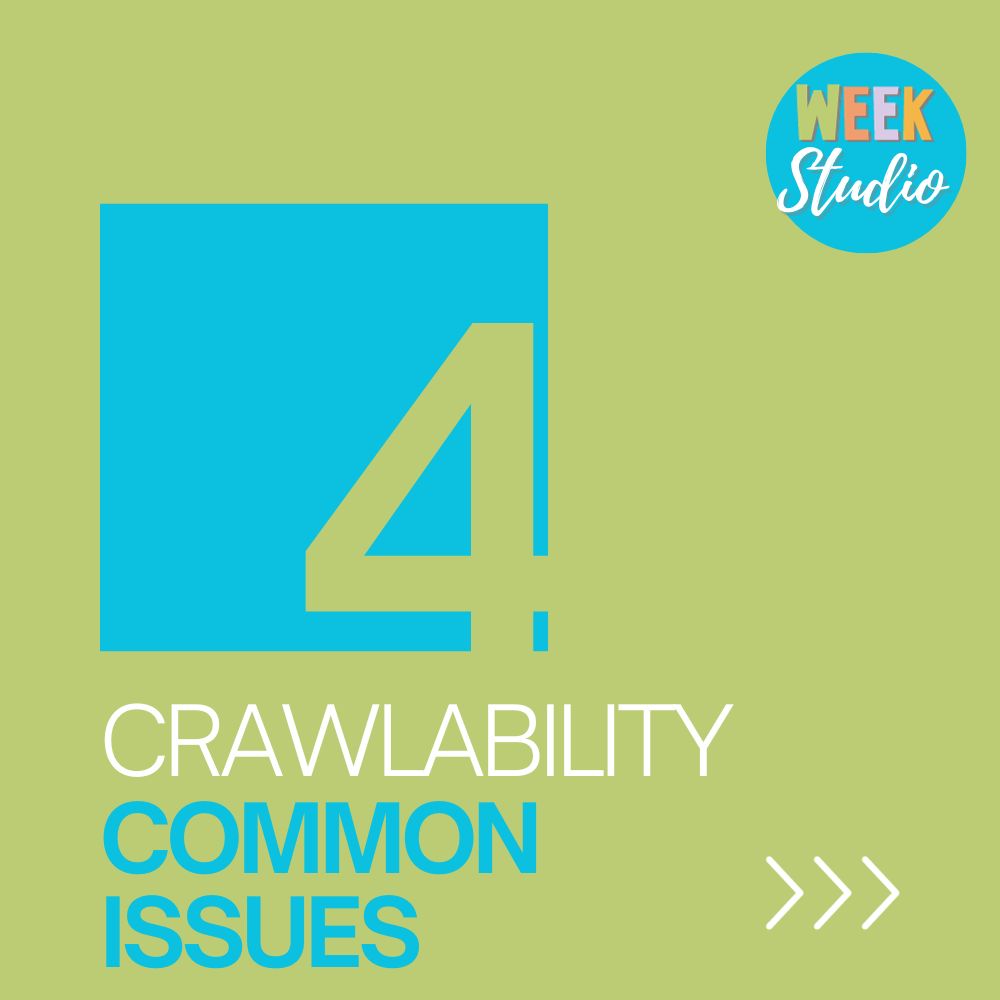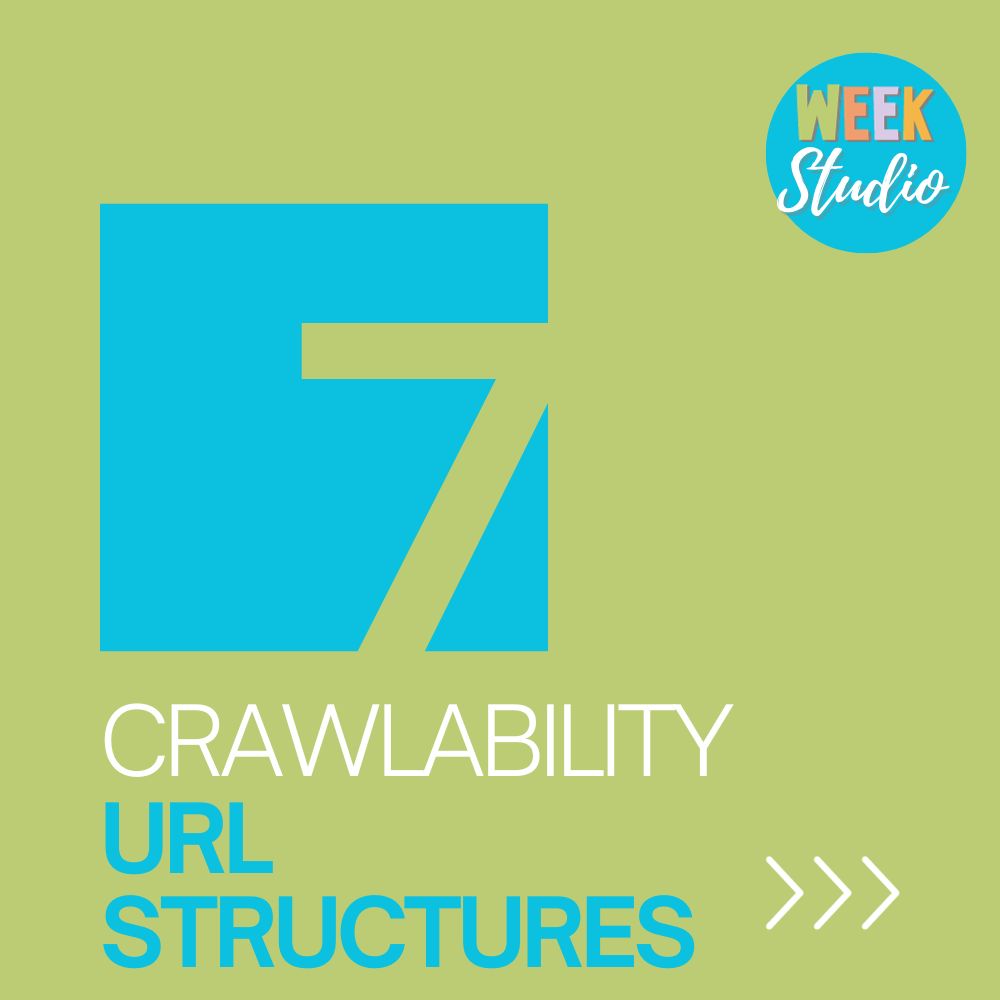In the vast digital landscape, where websites strive to gain visibility and prominence, understanding the nuances of SEO becomes paramount. Among the various elements that contribute to a website’s search engine ranking, crawlability stands out as a fundamental pillar. So, what exactly is crawlability in SEO, and why is it essential?
At its core, crawlability refers to the search engines’ ability to access and explore the content of a website. Imagine search engines as diligent explorers scanning the internet, and crawlability as the ease with which they navigate through the intricate web of information presented by websites. This process is facilitated by web crawlers, bots employed by search engines to index and rank pages.
The significance of crawlability lies in its direct impact on a website’s visibility in search engine results. When a website is easily crawlable, search engines can efficiently index its pages, making the content more accessible to users searching for relevant information. In essence, crawlability is the gateway to ensuring that your website is not just a digital entity but an actively participating member in the vast ecosystem of the internet.
As search engines continuously evolve to deliver more accurate and timely results, understanding how crawlability influences SEO is crucial for anyone looking to establish a robust online presence. In the following sections, we will delve deeper into the mechanisms of how search engines crawl websites and explore the factors that can either enhance or hinder this process.
How Search Engines Crawl Websites

Understanding how search engines navigate and index the vast expanse of the internet is fundamental to grasping the concept of crawlability. This intricate process involves the use of specialized programs known as web crawlers or spiders. Let’s embark on a journey to unravel how these digital arachnids traverse the digital landscape.
Web Crawlers: The Digital Explorers
Web crawlers are automated bots deployed by search engines to systematically browse the internet and gather information about websites and their content. These bots start their journey by visiting a set of known web pages, known as seed pages, and then follow the links on those pages to discover new ones. It’s like a virtual expedition where each link is a pathway to a new destination.
Indexing: The Digital Cataloging
As web crawlers navigate through different web pages, they collect data and create an index—a massive catalog of information. This index is essentially a database that search engines use to retrieve relevant results when a user enters a search query. The more efficiently a website can be crawled, the quicker its information gets added to this index.
Importance of Crawling in Indexing
Crawling and indexing go hand in hand. Efficient crawling ensures that search engines discover and index the latest content on your website promptly. When your website’s content is well-crawled, it has a higher chance of being accurately represented in search results. This, in turn, enhances the visibility of your website, making it more likely to appear in response to user queries.
Understanding the symbiotic relationship between crawling and indexing is crucial for website owners and content creators. In the subsequent sections, we will explore the concept of crawl budget, common crawlability issues, and how you can optimize your website to enhance its crawlability and, consequently, its performance in search engine results.
Crawl Budget and Its Impact on SEO

In the intricate world of SEO, the term “crawl budget” holds a significant role in determining how search engines prioritize and allocate resources when indexing websites. Let’s delve into the concept of crawl budget and unravel its profound impact on the performance of your website in search engine rankings.
Defining Crawl Budget

Crawl budget is essentially the number of pages or URLs that search engines allocate to crawl on your website within a given timeframe. It serves as a mechanism to manage the resources search engines invest in crawling and indexing your content. Understanding and optimizing your crawl budget is vital for ensuring that search engines focus on the most relevant and valuable parts of your website.
How Crawl Budget Affects Website Performance
- Discoverability of New Content:
- A larger crawl budget allows search engines to discover and index new content quickly. If your crawl budget is limited, new pages or updates to existing ones may not be promptly recognized and included in search results.
- Indexing Efficiency:
- Websites with efficient structures and clean navigation benefit from a more favorable crawl budget. Search engines can crawl and index relevant pages faster, leading to improved visibility.
- Priority Pages:
- Crawl budget helps search engines prioritize pages. High-quality, frequently updated pages are more likely to be crawled more often, enhancing their chances of ranking well in search results.
- Identification of Issues:
- A portion of the crawl budget is spent on identifying and crawling various elements, such as images, CSS, and JavaScript. Understanding how these elements contribute to crawl budget usage can aid in optimizing your website.
Optimizing Crawl Budget for SEO Success
- Sitemap Efficiency:
- Maintain an updated and comprehensive sitemap to guide search engine crawlers efficiently. A well-organized sitemap ensures that priority pages are easily accessible.
- Fixing Crawl Errors:
- Regularly monitor and address crawl errors. Broken links or inaccessible pages can consume crawl budget without providing value.
- Content Quality:
- Focus on creating high-quality, relevant content. Search engines are more likely to allocate crawl budget to websites with valuable and engaging content.
Understanding and optimizing your crawl budget is an ongoing process in the dynamic field of SEO. In the next sections, we will explore common crawlability issues, the importance of sitemaps, and the role of robots.txt in guiding search engine crawlers. Stay tuned to enhance your website’s crawlability and overall SEO performance.
Common Crawlability Issues

Achieving optimal crawlability for your website is a continual challenge in the ever-evolving landscape of SEO. To ensure that search engines efficiently navigate and index your content, it’s crucial to be aware of common crawlability issues that might hinder your website’s performance. Let’s explore these issues and understand how to address them effectively.
Duplicate Content

Duplicate content can confuse search engines, leading to difficulties in determining which version of a page to index and display in search results. Implement canonical tags to specify the preferred version of a page. Regularly check for and address duplicate content issues to ensure accurate indexing.
Broken Links

Broken links not only create a poor user experience but also waste crawl budget as search engines attempt to access non-existent pages. Regularly conduct link audits and fix broken links promptly. This not only enhances crawlability but also improves user satisfaction.
Unoptimized URL Structures

Complex and unoptimized URLs can impede crawlability. Clear and concise URLs contribute to better user experience and search engine understanding. Optimize URLs by incorporating relevant keywords and ensuring a logical structure. Use hyphens to separate words and avoid dynamic parameters when possible.
Lack of Sitemap

Without a sitemap, search engines may struggle to understand the structure of your website, potentially missing important pages during the crawling process. Create and regularly update an XML sitemap. Submit it to search engines to provide a roadmap for efficient crawling.
Thin Content Pages

Pages with minimal content may not offer sufficient information for search engines to evaluate their relevance, impacting their indexing and ranking. Ensure each page provides substantial, valuable content. Expand thin content pages or consider merging them to create comprehensive, informative resources.
Non-SEO Friendly URL Parameters
Dynamic URL parameters can lead to multiple variations of the same page, confusing search engines and affecting crawl efficiency. Configure URL parameters in Google Search Console to guide search engines on how to treat them. Use clean, descriptive URLs whenever possible.
By addressing these common crawlability issues, you pave the way for a more accessible and SEO-friendly website. In the upcoming sections, we will delve into the importance of sitemaps, the role of robots.txt, and strategies to enhance mobile crawlability—essential aspects for optimizing your website’s performance in search engine results. Stay tuned for actionable insights to boost your site’s crawlability.
Importance of Sitemaps

Efficient crawlability is closely tied to how well search engines can understand and navigate your website. In this context, the role of sitemaps becomes pivotal. Sitemaps serve as the roadmap for search engine crawlers, guiding them through the intricate pathways of your digital domain.
Sitemaps provide a structured overview of your website’s content, acting as a guide for search engine crawlers. By outlining the hierarchy and relationships between pages, a well-constructed sitemap ensures that crawlers can easily navigate through your site.
When search engines crawl your website, they allocate a crawl budget—an allocated number of pages to crawl within a specific timeframe. A sitemap helps prioritize important pages, ensuring that crucial content is promptly discovered, indexed, and presented in search results.
The efficiency of the indexing process is significantly improved with a sitemap. Instead of relying solely on discovering links within your site, search engines can refer to the sitemap, leading to quicker and more comprehensive indexing.
If you frequently update your content or add new pages, a sitemap serves as a notification to search engines about these changes. This proactive approach ensures that your latest content is promptly crawled and reflected in search results.
While the primary audience for sitemaps is search engines, having a user-friendly sitemap on your website can also benefit human visitors. It provides an organized and easily navigable overview of your content, improving the overall user experience.
In the era of mobile-first indexing and rich media content, specialized sitemaps for mobile pages and videos contribute to a more comprehensive and efficient crawl. This is particularly relevant as search engines adapt to the changing landscape of online content consumption.
Incorporating and regularly updating an XML sitemap is a proactive step toward improving the crawlability of your website. As we continue our exploration into crawlability optimization, the next section will shed light on the role of robots. Stay tuned for more insights into crafting a search engine-friendly website.
Robots.txt and Its Role
In the intricate dance between websites and search engine crawlers, the choreography is often directed by a small yet powerful file known as robots.txt. This humble text file, when strategically deployed, acts as a guidebook for web crawlers, influencing how they navigate and interact with the content on your site. Let’s delve into the role of robots.txt and its significance in shaping the crawling behavior of search engines.
The robots.txt file serves as a set of directives for web crawlers, informing them which areas of a website they are allowed to crawl and index. Essentially, it acts as a virtual “keep out” sign, steering crawlers away from specific sections that may not be intended for public consumption or indexing.
One of the primary functions of robots.txt is to exclude certain parts of a website that may contain sensitive information or are not meant for public visibility. This can include directories with confidential data, admin panels, or any section that isn’t designed for public access.
Directing Crawl Priority
Through robots.txt, website owners can influence the priority assigned to different sections of their site. By allowing or disallowing access to specific areas, you can guide search engine crawlers to focus on the most critical and relevant content, optimizing the crawl budget for maximum impact.
Robots.txt also acts as a form of communication etiquette between website owners and search engines. It provides a transparent way to convey which portions of the site should be crawled and which should be left untouched, fostering a harmonious relationship between content providers and search engine algorithms.
How to Create a Robots.txt File
Creating a robots.txt file is a straightforward process. It’s a plain text file that should be placed in the root directory of your website. The file typically includes directives like “User-agent” (specifying the crawler) and “Disallow” (indicating areas to avoid). For example, to disallow crawling of a directory, the entry might look like:
- User-agent: *
- Disallow: /private/
In this instance, the asterisk (*) denotes all crawlers, and the “Disallow” line instructs them to avoid crawling anything under the “private” directory.
Regular Review and Updates
As your website evolves, it’s crucial to review and update the robots.txt file accordingly. Regularly assess which areas need protection or exposure and adjust the directives to align with your current content strategy and website structure.
In the subsequent sections, we’ll explore the impact of mobile crawlability on SEO, strategies to optimize page speed for efficient crawling, and the intricate relationship between JavaScript and SEO. Stay tuned for insights into fine-tuning your website’s crawlability for optimal search engine performance.
Page Speed and Crawlability
In the digital realm, where users demand instant access to information, the speed at which your web pages load is not just a user experience consideration—it significantly influences how search engines crawl and index your content. Let’s explore the intricate relationship between page speed and crawlability and understand how optimizing for speed can propel your website to the forefront of search engine results.
Crawl Rates and Page Speed Search engines deploy crawlers to navigate and index web pages. The speed at which these crawlers can access and retrieve information directly impacts crawl rates. Faster-loading pages are not only favorable for user experience but also contribute to efficient crawling, ensuring that search engines can index a larger portion of your content in a shorter timeframe.
Mobile Page Speed and SEO With the prevalence of mobile devices, mobile page speed is a critical factor in the crawlability equation. Mobile users, often on varying network speeds, expect rapid page loading. Search engines recognize this user expectation, and mobile-friendly, fast-loading pages are given preference in mobile search results.
Impact on Crawl Budget Crawl budget, the allocated number of pages a search engine will crawl on your site, is influenced by page speed. Sluggish pages consume more crawl budget, potentially leading to search engines spending less time on your site and overlooking important content. Optimizing page speed helps make the most of your crawl budget.
Strategies for Optimal Page Speed
- Image Optimization:
Compress and optimize images to reduce file sizes without compromising quality. Efficient image loading contributes significantly to faster page rendering. - Browser Caching: Leverage browser caching to store static resources locally on users’ devices. This reduces the need for repeated resource downloads, enhancing page speed.
- Minimize HTTP Requests: Reduce the number of elements on a page that require separate HTTP requests. Combining CSS and JavaScript files, and using sprites for images, can minimize the number of requests, expediting page loading.
- Content Delivery Network (CDN): Implement a CDN to distribute your website’s static content across multiple servers worldwide. This ensures that users, regardless of their location, experience faster page loading times.
- Optimize Code: Streamline and optimize your website’s code. Remove unnecessary characters, spaces, and line breaks to reduce file sizes, facilitating quicker page loading.
- Prioritize Critical Rendering Path: Prioritize the loading of essential elements (critical rendering path) to ensure that users see meaningful content quickly. This is particularly crucial for mobile users on slower connections.
By prioritizing and implementing these strategies, you not only enhance the user experience but also optimize your website’s crawlability. In the upcoming sections, we will explore the intricate relationship between JavaScript and SEO, the significance of structured data, and strategies for monitoring and improving crawl efficiency. Stay tuned for further insights into refining your website’s crawlability for optimal search engine performance.
JavaScript and SEO Crawlability
In the dynamic landscape of modern websites, JavaScript plays a pivotal role in enhancing user experiences. However, the integration of JavaScript with SEO introduces unique challenges that can impact the crawlability and visibility of your website in search results.
JavaScript often dynamically loads content on a page, presenting a challenge for search engines that may struggle to render and index this dynamic content. The complexity introduced by JavaScript requires careful consideration to ensure that search engines accurately interpret and index the full scope of your website’s content.
One notable challenge arises from the delayed loading characteristic of JavaScript. Since search engines may not wait for dynamic elements to load, there’s a risk of crucial content being missed during the crawling process. This can result in incomplete indexing and potential visibility issues in search results.
Single-Page Applications (SPAs), which heavily rely on JavaScript for content loading, present a unique set of challenges for crawlability. Special attention is needed to ensure that search engines can access and index all relevant content within SPAs, maintaining visibility and ranking in search results.
To address these challenges and enhance JavaScript crawlability, employing strategies such as Server-Side Rendering (SSR) becomes crucial. SSR involves pre-rendering JavaScript-generated content on the server side, providing search engines with a fully rendered page for more effective crawling and indexing.
Including the “noscript” tag in HTML offers an alternative for users with disabled JavaScript, ensuring that search engines have content to crawl even when JavaScript is not executed. Additionally, utilizing tools like the “Fetch and Render” feature in Google Search Console aids in identifying rendering issues that might hinder crawlability.
Critical content, especially elements contributing to SEO, should be made accessible without relying on JavaScript. This includes metadata, headings, and other essential on-page elements, ensuring that search engines can effectively crawl and index key information. In the intricate dance between JavaScript and SEO, careful navigation of these challenges is essential to maintain optimal crawlability and visibility in search engine results. As we continue our exploration,
Structured Data and Rich Snippets
In the ever-evolving landscape of SEO, structured data has emerged as a powerful tool to enhance the visibility and richness of information in search engine results. The use of structured data enables search engines to better understand the content on your pages, leading to the potential display of rich snippets—a visually enhanced representation of your content in search results. This can include details about products, reviews, events, recipes, and more. By incorporating structured data markup, you offer search engines a clearer understanding of the context and relevance of your content.
Rich snippets are the visually enhanced search results that appear on the search engine results page (SERP) when structured data is implemented. They go beyond traditional snippets by providing additional information such as star ratings, publication dates, product prices, and more. Rich snippets not only make your results stand out but also offer users more context before they click, potentially increasing click-through rates.
To implement structured data, you can utilize Schema.org markup, a collaborative effort by major search engines that provides a comprehensive vocabulary defining entities and their relationships. This offers a standardized way to convey information to search engines. For those without direct access to the website’s code, Google Search Console offers a Data Highlighter tool, allowing you to tag and highlight specific elements on your web pages for structured data implementation without manual coding.
Before deploying structured data, it’s crucial to use Google’s Structured Data Testing Tool to ensure that your markup is correct. This tool helps identify any errors or missing elements, ensuring that search engines can accurately interpret and display your rich snippets in search results. As we continue our exploration, the next section will focus on monitoring and improving crawl efficiency, providing insights into optimizing your website for search engine performance. Stay tuned for actionable strategies to enhance your site’s crawlability.
Monitoring and Improving Crawlability
In the dynamic realm of SEO, monitoring and continually enhancing the crawlability of your website is vital for maintaining and improving search engine performance. By employing strategic monitoring techniques and implementing targeted improvements, you ensure that search engines efficiently navigate and index your content.
Performing regular crawl audits allows you to gain insights into how search engine crawlers interact with your website. Use tools like Google Search Console or third-party crawlers to identify potential crawl issues, such as broken links, redirect chains, or server errors. Addressing these issues promptly ensures a smooth crawling experience.
Understand and optimize your crawl budget to ensure that search engines focus on crawling the most valuable and relevant pages on your site. Monitor crawl budget usage through Google Search Console and prioritize content that aligns with your SEO goals. This can involve improving site speed, streamlining sitemaps, and fixing crawl errors.
Regularly update and maintain your XML sitemap to reflect the most current structure of your website. Submit the updated sitemap to search engines through Google Search Console to provide an accurate roadmap for crawling. Ensure that priority pages are included and irrelevant or duplicate content is excluded.
Monitor and manage 404 errors to prevent them from negatively impacting crawlability. Use tools like Google Search Console to identify pages returning 404 errors and either redirect them to relevant content or implement a custom 404 page that guides users and search engines to useful areas of your site. This proactive approach contributes to a positive crawl experience and ensures that valuable content is effectively indexed.
As we delve deeper into optimizing crawlability, the next section will explore the intricacies of URL structure and its impact on search engine performance. Stay tuned for insights into crafting an SEO-friendly URL structure for enhanced crawlability and visibility.
Future Trends in SEO Crawlability
As technology and user behaviors evolve, the landscape of SEO crawlability is continuously shaped by emerging trends. Staying ahead of these trends is crucial for maintaining a competitive edge and ensuring that your website is effectively crawled and indexed by search engines.
The increasing reliance on mobile devices is likely to lead to further prioritization of mobile-first indexing by search engines. Websites that offer seamless mobile experiences and prioritize mobile crawlability will continue to gain prominence in search rankings.
Anticipate advancements in search engine rendering capabilities, particularly in the handling of JavaScript. This evolution will result in more accurate rendering of dynamic content, benefiting websites that rely on JavaScript-heavy frameworks with enhanced crawlability and indexing.
The growing importance of structured data is expected to lead to even richer and more detailed search results. Implementing structured data not only aids in crawlability but also enhances the presentation of your content in search engine results, providing users with more context before they click.
Stay tuned to evolving trends in voice search and artificial intelligence. As these technologies become more prevalent, their impact on how search engines crawl and understand content will shape future SEO strategies. Optimizing for voice search and ensuring that your content is AI-friendly will be integral to effective crawlability in the evolving digital landscape.
Staying abreast of these future trends in SEO crawlability positions your website for success in the dynamic world of search engine optimization. As we navigate the future of SEO, adapting to these trends will be essential for maintaining and improving your website’s visibility and performance in search results.
Conclusion
In the ever-evolving realm of SEO, mastering crawlability is a cornerstone for ensuring your website’s visibility and success in search engine results. From understanding the basics of crawlability to navigating common issues, optimizing for mobile, and embracing future trends, each facet contributes to the overall health of your site in the digital landscape.
A website that is easily navigable by search engine crawlers ensures that your content is promptly and accurately indexed, enhancing its chances of appearing prominently in search results. By addressing common crawlability issues, implementing best practices, and staying attuned to emerging trends, you not only improve your website’s search engine performance but also enhance the user experience.
Remember that SEO is an ongoing journey, and maintaining optimal crawlability requires consistent effort and adaptation to the ever-changing digital landscape. Stay proactive, monitor your site’s performance, and implement strategies that align with both current best practices and future trends in SEO.
FAQs
1. How often should I update my XML sitemap for optimal crawlability?
Regularly update your XML sitemap whenever there are significant changes to your website’s structure or content. This ensures search engines have an accurate roadmap for crawling.
2. Why is mobile crawlability important for SEO?
Mobile-first indexing by search engines emphasizes the importance of mobile crawlability. Websites that offer a seamless mobile experience are likely to rank higher in search results.
3. What role does structured data play in SEO?
Structured data provides a standardized way to communicate specific information about your content to search engines. It can result in the display of rich snippets, enhancing the visibility of your content in search results.
4. How can I optimize crawl budget for my website?
Optimize crawl budget by improving site speed, streamlining sitemaps, fixing crawl errors, and prioritizing content that aligns with your SEO goals.
5. What future trends in SEO crawlability should I be prepared for?
Anticipate trends such as increased emphasis on mobile-first indexing, advancements in rendering capabilities, and a growing importance of structured data for richer search results. Stay adaptable to emerging technologies like voice search and artificial intelligence.
As you embark on your journey to refine crawlability and optimize your website for search engines, these FAQs serve as a guide to address common queries and navigate the intricacies of SEO.
